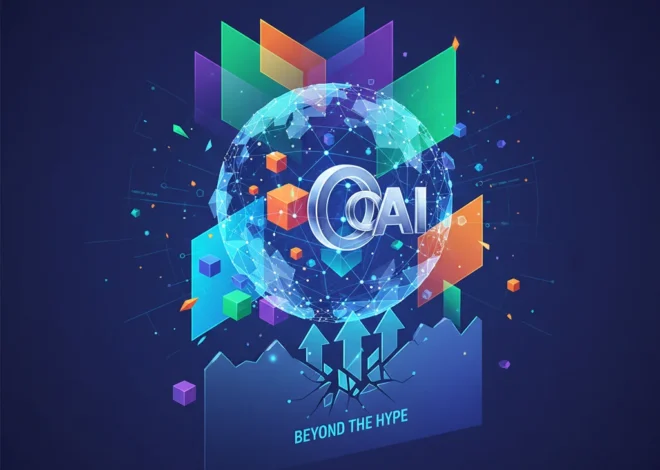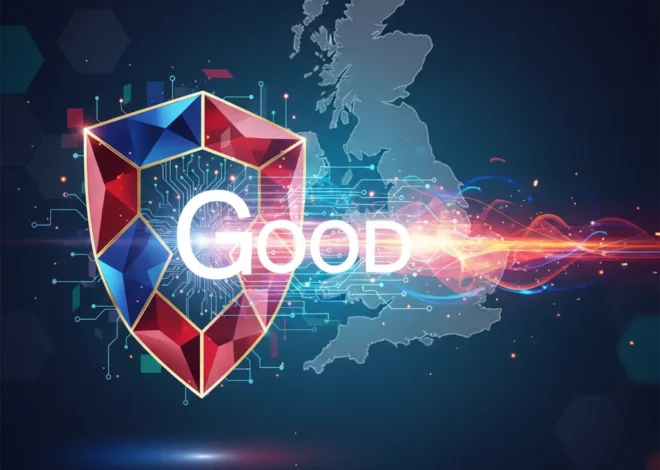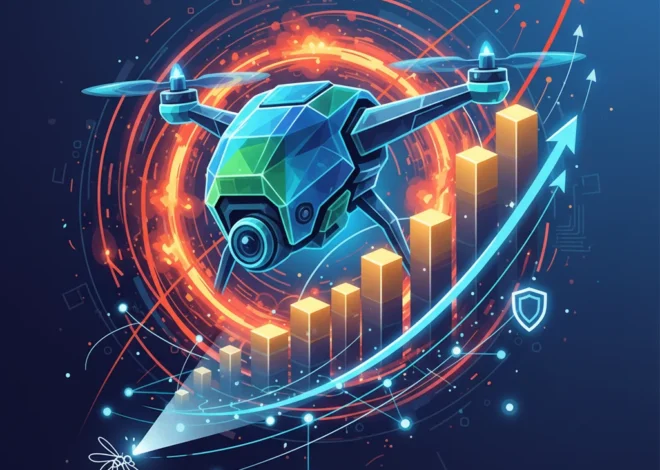
The Billion-Dollar Pivot: How Synthesia Traded Hollywood Dreams for a SaaS Empire
The Allure of the Silver Screen
Imagine this: You’re watching the latest Hollywood blockbuster, but instead of reading subtitles, you see and hear Tom Hanks speaking flawless Mandarin, his lip movements perfectly in sync. This wasn’t just a fantasy; it was the initial, dazzling vision of Synthesia, an ambitious artificial intelligence startup. Founded by a team of researchers and entrepreneurs, their first product was a marvel of machine learning—an AI-powered dubbing tool that could change an actor’s speech to another language with uncanny realism.
The technology was undeniably cool. They even created a viral demo showing David Beckham speaking nine different languages to promote a malaria awareness campaign. It was the kind of high-tech wizardry that grabs headlines and captures the imagination. The goal seemed clear: revolutionize the film and television industry. However, as many in the world of startups discover, a “cool” product and a viable business are two very different things.
The founders, led by CEO Victor Riparbelli, soon ran into a classic entrepreneurial roadblock. While the technology was impressive, they realized the potential market was surprisingly small. As Riparbelli noted, the total addressable market for high-end dubbing in Hollywood was limited. They had built a groundbreaking piece of software, but it was a solution for a niche problem. This moment of clarity forced a difficult, and ultimately, game-changing decision.
From Niche Novelty to Enterprise Essential: The Art of the Pivot
This is the point where many startups falter. Clinging to an original vision, they burn through capital trying to fit a square peg into a round hole. Synthesia, however, took a different path. They looked past the glamour of Hollywood and asked a more fundamental question: Who else needs to create video content easily and affordably?
The answer, it turned out, was… everyone. From multinational corporations needing to create training modules in multiple languages to small businesses wanting to produce marketing videos without a huge budget. The team recognized that the underlying AI engine they had built for dubbing could be repurposed for a much larger, more lucrative application: a general-purpose video creation platform.
This strategic shift, or “pivot,” transformed Synthesia from a niche tool into a scalable SaaS (Software as a Service) platform. Instead of selling a high-touch service to a handful of movie studios, they could now offer a self-serve, cloud-based product to millions of businesses worldwide. This decision widened their scope from a narrow, specialized industry to the vast ocean of corporate communications, learning and development, and digital marketing.
To understand the scale of this strategic shift, consider the difference in market potential:
| Factor | Original Model (AI Dubbing) | Pivoted Model (SaaS Video Platform) |
|---|---|---|
| Target Market | Film & TV Studios | All Industries (Corporate, SMB, Education) |
| Total Addressable Market (TAM) | Niche, Relatively Small | Massive, Global |
| Business Model | Project-based, High-touch Service | Subscription-based, Scalable SaaS |
| Use Case | Post-production dubbing | Training, Marketing, Comms, Onboarding |
| Growth Potential | Limited by industry size | Exponential, driven by digital transformation |
This pivot wasn’t just a minor course correction; it was a complete re-imagining of the company’s identity and ambition. It was a bet that the future of content creation lay not in perfecting old media, but in empowering a new generation of creators through automation and innovation.
The Innovation Tax: Why Stifling EV Adoption is a Red Light for the Entire Tech Ecosystem
How It Works: The Magic of Generative AI in Action
So, what does Synthesia’s platform actually do? In essence, it makes video creation as simple as writing a Word document or a PowerPoint presentation. Users can type a script, choose from a library of stock or custom AI-generated avatars, select a voice and language, and within minutes, the platform’s artificial intelligence engine generates a polished video.
This process eliminates the need for cameras, microphones, actors, and studios. A company can create a new employee onboarding video for its German office, narrated by a German-speaking avatar, without anyone ever leaving their desk in New York. This level of automation drastically reduces the time, cost, and complexity of video production.
Under the hood, this is a complex symphony of several machine learning disciplines. It involves Natural Language Processing (NLP) to understand the script, text-to-speech (TTS) synthesis to create the audio, and sophisticated computer vision and generative models to animate the avatar’s facial expressions and lip movements to perfectly match the narration. The intricate programming required to synchronize these elements seamlessly is a testament to the team’s deep technical expertise.
Nvidia's AI Juggernaut: Is This a Bubble or the New Industrial Revolution?
Confronting the Deepfake Dilemma: Ethics and Cybersecurity
Of course, technology this powerful comes with significant ethical responsibilities. The ability to create realistic video of people saying things they never said is the very definition of a “deepfake.” From the beginning, Synthesia understood the potential for misuse and the critical importance of building safeguards into its platform.
The company has implemented a robust content moderation policy and a “Know Your Customer” (KYC) process to verify users’ identities. They explicitly forbid the creation of harmful, deceptive, or defamatory content. According to CEO Victor Riparbelli, it’s a constant “cat and mouse game” (source) against bad actors, a challenge that requires continuous investment in cybersecurity and moderation technology.
This proactive stance on ethical AI is crucial. As generative AI tools become more widespread, the companies that build trust and prioritize safety will be the ones that endure. Synthesia’s approach demonstrates an awareness that long-term success in the AI space depends not just on technical innovation, but on responsible implementation.
A Billion-Dollar Valuation and the Future of Content
Has the pivot paid off? The numbers speak for themselves. Synthesia has attracted thousands of corporate clients and achieved “unicorn” status, having been valued at $1 billion in its most recent funding round. This explosive growth validates their decision to pursue the broader enterprise market.
The implications of this technology are far-reaching. We are moving toward a future where personalized, on-demand video is the norm. Imagine a customer support portal that generates a custom video tutorial to answer your specific question, or a sales team that can send bespoke video messages to hundreds of prospects, each one personalized with the prospect’s name and company details.
Synthesia’s journey is more than just a story about a successful startup. It’s a powerful case study in strategic agility, the scalability of SaaS, and the transformative potential of artificial intelligence. They saw the limited potential in a niche product and had the courage to build an AI tool that could appeal across all industries, fundamentally changing how we think about creating and consuming digital content. By trading the glamour of Hollywood for the engine room of enterprise, Synthesia didn’t just find a bigger market—they started a revolution in communication.
Nvidia's AI Empire: Deconstructing the Billion Quarter That Shook the Tech World
Key Takeaways from Synthesia’s Success
For entrepreneurs, developers, and tech professionals, Synthesia’s story offers several powerful lessons:
- Validate Your Market, Not Just Your Tech: A brilliant product in a tiny market is a hobby, not a business. Rigorously assess your Total Addressable Market.
- Embrace the Pivot: Don’t be afraid to abandon your original idea if data points to a larger opportunity. Agility is a startup’s greatest asset.
- Build for Scale: A scalable SaaS model that serves thousands of customers is often more valuable than a high-touch service model that serves a few.
- Lead with Responsibility: When dealing with powerful technologies like AI, building in ethical safeguards from day one is non-negotiable for long-term trust and success. As the company has shown, proactive cybersecurity and moderation are part of the product, not an afterthought.
Synthesia’s wide-angle view has not only fueled its own growth but has also provided a blueprint for how to build a durable, impactful company in the age of AI. Their success is a powerful reminder that sometimes, the biggest opportunities lie just beyond your initial field of vision.


